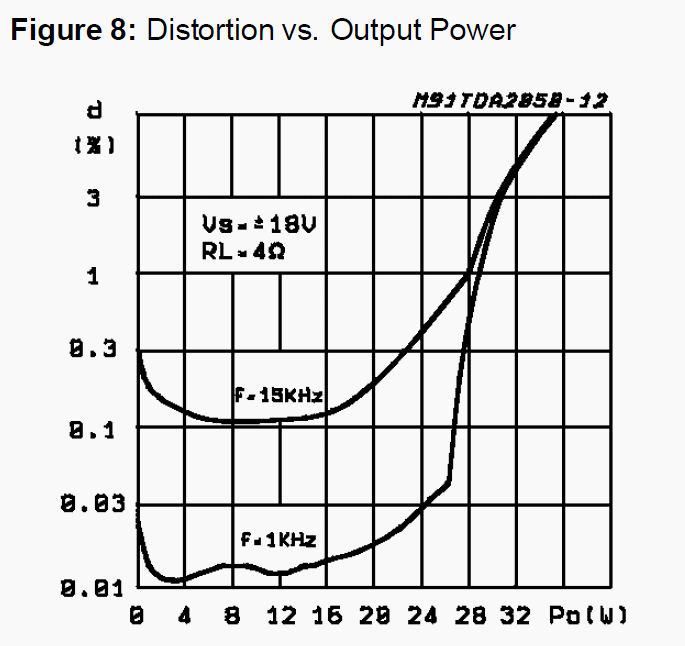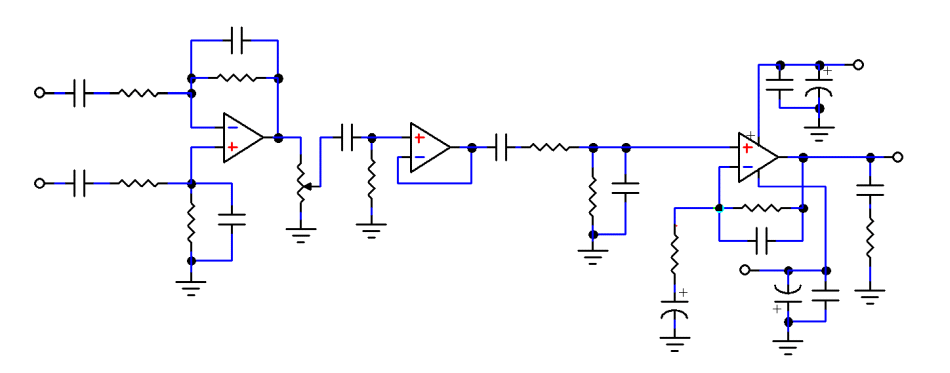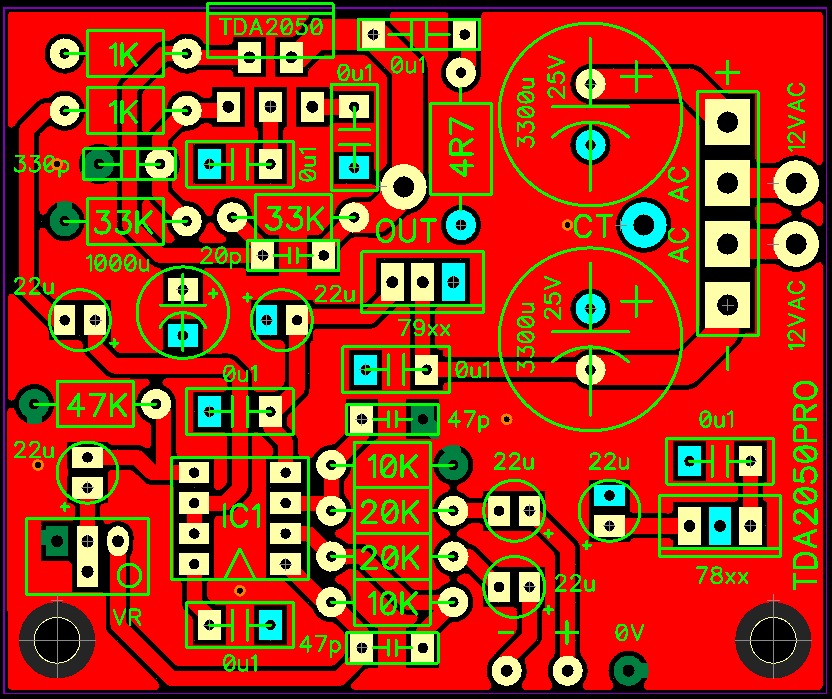|
TDA2050 The TDA2050 is similar to the TDA2030A. They even share the same pin-outs. The major difference is the TDA2050 has higher current delivery so it doesn’t need the external transistors. On the other hand, the THD is not as impressive as the TDA2030A. Unlike the TDA2030A, there is a simplified schematic of the TDA2050. This will give us an idea of the way this chip amp is designed.
I was quite surprised that the input differentials are Darlingtons. So this chip amp doesn’t need much source current to drive it. Current mirrors are used as active loads. This translate to pretty high gain in the input stage. The link to the 2nd stage is again by a Darlington. Input differential and VAS are biased with their own current sources. Power outputs are in quasi-complementary. Overall, it’s quite a nice circuit.
As I mentioned earlier, the Distortion of the TDA2050 is not as impressive as the TDA2030A. 1kHz is not an issue but note the 15kHz. It is above 0.1% all the time. In fact, it gets worse after 16W. My guess the reason for this disappointing THD15 is due to the designers keeping the standing currents on the lean side. Does that mean it’s useless? Not really. Mini-combos and TVs are ideal candidates. For me, I have no problems using it in the commercial industry. And that’s what the TDA2050Pro is all about. A small amplifier for active speakers. It’s exactly the same as the TDA2030Pro except it’s simpler. For things like voice announcements or Background Music, the TDA2050 is perfectly fine. TDA2030ProWe can see the simplicity when compared to the TDA2030Pro. The input is the same. Balanced with a Gain adjustment followed by a Buffer. Then we come to the amplifier proper. Just the input filters and the feedback networks. No additional transistors.
With the use of a dual op amp, I included voltage regulators to ensure it has a clean supply. Users can opt for 15V regulators or 12V to power the op amp. Bear in mind the working voltages for the TDA2050 is at +-18Vdc. TDA2050Pro PCB
Since there’s no need for extra transistors, the TDA2050Pro pcb is smaller than the TDA2030Pro. It measures 2.7″ x 2.25″ only. On-board are 2 pieces of 3,300uF capacitors, totaling 6,600uF. That’s a healthy number. In front is a 8A Bridge Rectifier. All you have to do is solder in the transformer secondaries and the TDA2050Pro is ready to go. Idiot proof. |

February 26, 2022Electronics, Projects

 Fig 2 – THD vs Output Power
Fig 2 – THD vs Output Power Fig 3 – Schematic of TDA2050Pro
Fig 3 – Schematic of TDA2050Pro